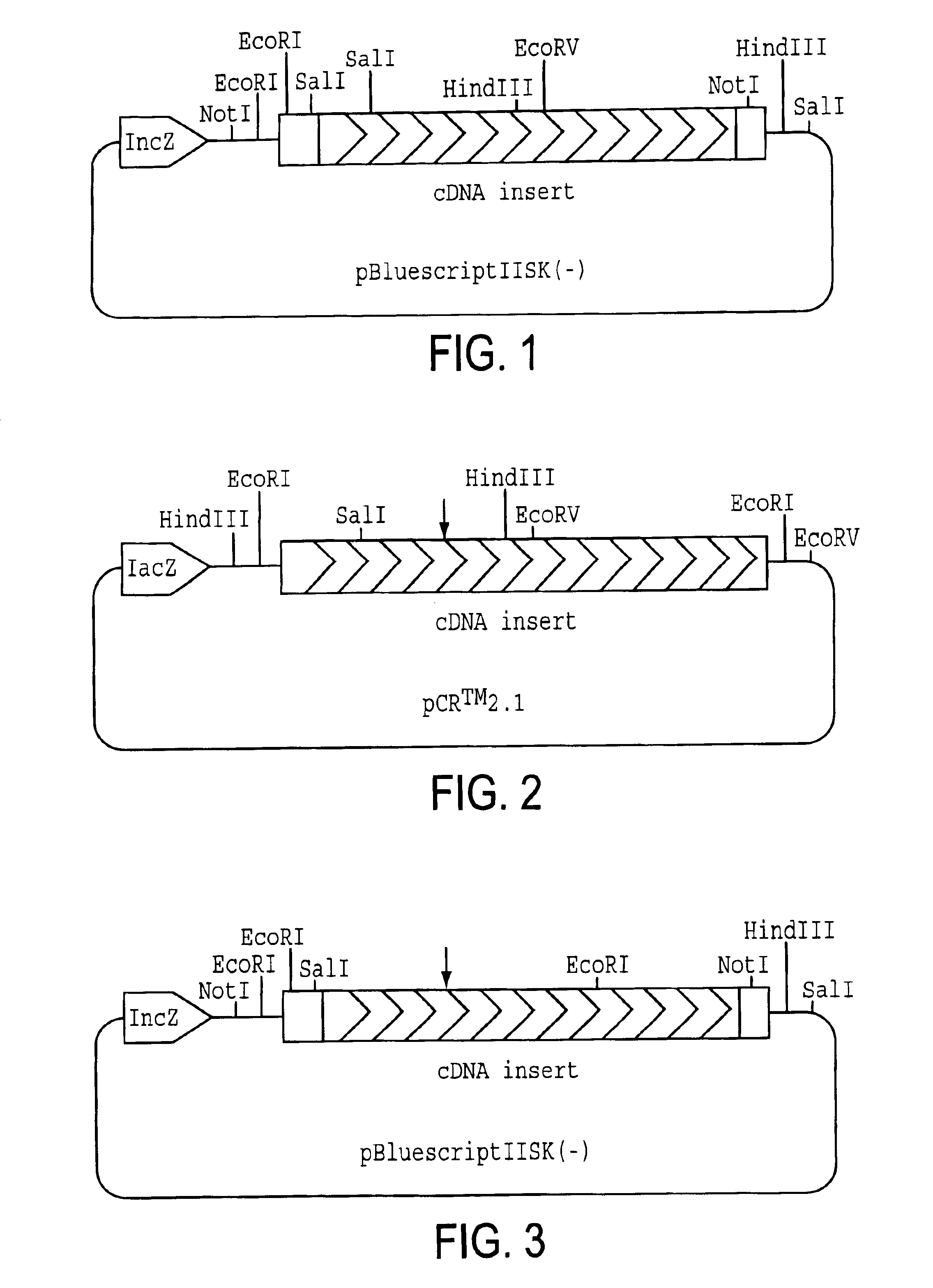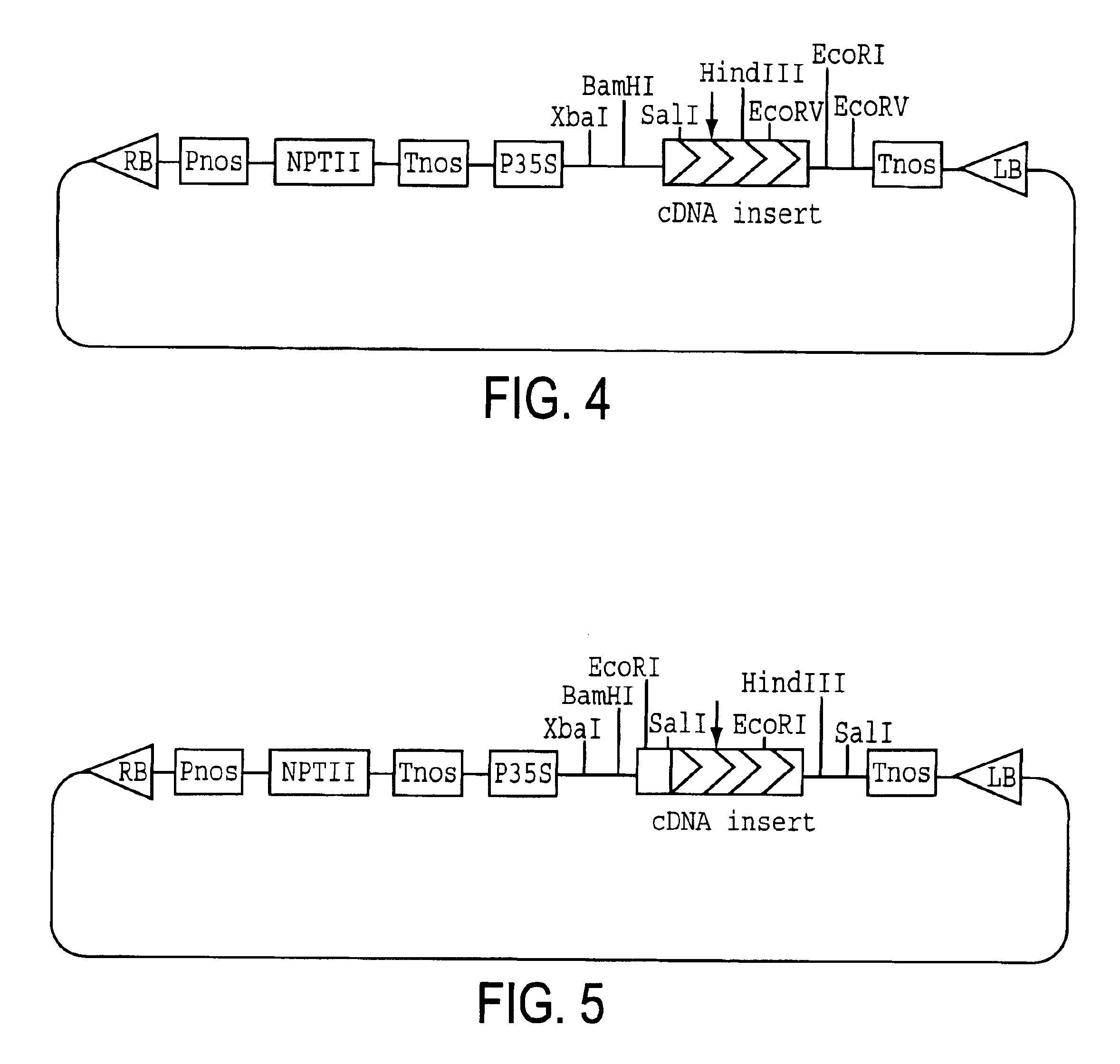Herbicide-resistant protoporphyrinogen oxidase isolated from Nicotiana tabacum
a protoporphyrinogen and oxidase technology, applied in oxidoreductases, biochemistry apparatus and processes, enzymes, etc., can solve the problem of not clear whether the activity of such genes can be performed in a plant cell, and achieve the effect of reducing the number of oxidative stress
- Summary
- Abstract
- Description
- Claims
- Application Information
AI Technical Summary
Benefits of technology
Problems solved by technology
Method used
Image
Examples
example 1
Selection of Tobacco Callus Tolerant to Photobleaching Herbicide
A. Preparation of Tobacco Callus and Regeneration of the Callus and Study of Sensitivity to Photobleaching Herbicide
[0054]Tobacco (Nicotiana tabacum CV. Xanthi NC) was grown to 40 cm tall in a green house. And a leaf was cut, and the leaf was cut to square-shape of 5 cm width by a knife, then immersed in 70% ethanol for 30 seconds and in an aqueous solution of sodium hypochlorite (the effective concentration of chlorine was 1%) for 15 minutes to conduct surface-sterilization. After washing it for three times by sterilized water and removal of epidermis, the leaf fragment was suspended in 0.6M manitol (pH 5.8) containing an enzyme solution (1% cellulase onozuka R-10 and 0.05% macerozyme R-10 (manufactured by Yakult Co., Ltd.)) at 26° C. for three hours. After the enzyme treatment, protoplasts were washed with centrifugation by Murasige-Skoog (MS) medium for three times, and the obtained protoplast was suspended into MS s...
example 2
Analysis of the Resistant Mechanism of the Callus Tolerant to Photobleaching Herbicide
A. Accumulation of Protoporphyline IX in Photobleaching Herbicide Resistant Cell Lines
[0058]The present inventors have tried to analyze the resistant mechanism in the resistant strain tolerant to photobleaching herbicide. It has been reported that in a plant treated by photobleaching herbicide, protoporphyrin IX is accumulated, the present inventors tried to measure the accumulation of protoporphyrin IX periodically. A resistant callus which has been subcultured in MS liquid medium containing 1,200 nM of compound H under light condition was cultured for 24 hours in a dark condition, then transplanted into MS liquid medium containing 1,200 nM of compound H, and after 6, 12, 18, 24, 32 and 48 hours later, the callus was collected, and protoporphyrin IX was measured. The extraction and assay of the protoporphyrin 1× from the callus were conducted as follows (Matringe, M. et al. (1989) Biochem, J. 260:...
example 3
Cloning of Tobacco Protoporphyrinogen Oxidase cDNA
A. Preparation of mRNA
[0068]9 g of a green leaf of tobacco (Nicotiana tabacum CV. SR1) was cut, and it was homogenized in liquid nitrogen. To the homogenate, 40 ml of RNA extraction buffer (200 mM Tris-HCl (pH9.0), 100 mM NaCl, 10 mM EDTA, 0.5% SDS, 0.1% 2-ME) and 40 ml of Tris-saturated phenol were added, and shaken vigorously for 10 minutes, then centrifuged with 2,000×g for 10 minutes, and the supernatant was recovered. To the supernatant, equal amount of Tris-saturated phenol was added, and shaking for 10 minutes and centrifugation for 10 minutes were repeated. To the supernatant thus derived, equal amount of phenol: chloroform: isoamylalcohol (25:24:1) were added, and shaking for 10 minutes and centrifugation for 10 minutes were further repeated two times. To the supernatant thus derived, equal amount of chloroform: isoamylalcohol (24:1) were added, and shaking for 10 minutes and centrifugation for 3 minutes were conducted two t...
PUM
| Property | Measurement | Unit |
|---|---|---|
| width | aaaaa | aaaaa |
| pH | aaaaa | aaaaa |
| thick | aaaaa | aaaaa |
Abstract
Description
Claims
Application Information
 Login to View More
Login to View More - R&D
- Intellectual Property
- Life Sciences
- Materials
- Tech Scout
- Unparalleled Data Quality
- Higher Quality Content
- 60% Fewer Hallucinations
Browse by: Latest US Patents, China's latest patents, Technical Efficacy Thesaurus, Application Domain, Technology Topic, Popular Technical Reports.
© 2025 PatSnap. All rights reserved.Legal|Privacy policy|Modern Slavery Act Transparency Statement|Sitemap|About US| Contact US: help@patsnap.com


